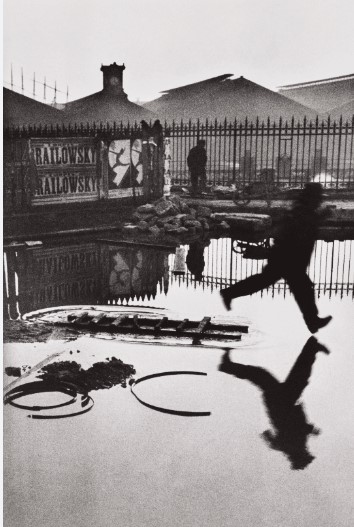
Henri Cartier was known for his candid pictures. He quoted “its like hunting without killing”, this means that when he is taking photographs he has to wait for the right moment and use his intuition to take the photo at the right time. He was also a humanist photographer. He brought his camera everywhere with him, and used his camera like an extension of the eye. He brought his camera everywhere to capture the reality of life and an everyday image. He claimed that his camera was like an extra limb and he never went anywhere without it. This way he could capture many moments in everyday life.

Background of Henri-Cartier Bisson
Henri-Cartier Bisson grew up in a wealthy French family. He was first fascinated by paintings until photography really opened his eyes. Photography inspired Henri to travel to different countries to capture candid’s of everyday life. He ended up travelling to Africa and other places in Europe. He discovered that photography wasn’t about taking photos but about the essence of existence. He was inspired by the quote “there was never not a decisive moment” and he decided photography was about intuition, anticipation and connection with the subject of the environment.

In this image Henri Cartier-Bresson uses lines as a border of the subject who is walking in the background of this image. This creates the idea that not only is this image about the man that is jumping but also about the man in the back. He also uses negative space, this
When Cartier Bresson was taking these photos, he only had a camera that produced black and white images because of the limitations in the 1930’s, he called this monochromatic magic. Even though there is no colour the monochromatic shows a sense of timeless qualities. By having no colour the viewers can thoroughly focus on what’s in this image and what’s going on instead of being distracted by the different colours.
In this image Cartier-Bresson uses a fast shutter speed, this meant that he was able to capture the subject jumping in mid air without being too blurry. With the limitations of the camera quality in 1930, though the subject is still slightly blurry, he was able to capture the perfect moment which enabled him to create this image with as little blurriness as possible. Henri Cartier-Bresson also uses a low aperture to allow him to have the camera focussed on the foreground and the background slightly blurred. This is to allow the viewer to focus on the main subjects in the image instead of the irrelevant background.
